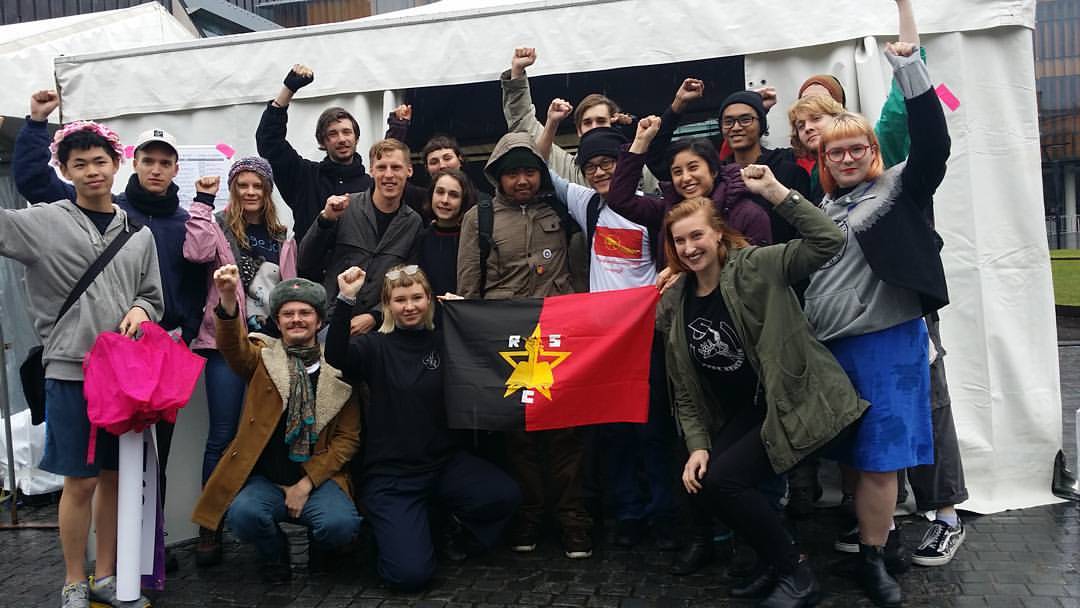In 1920, a council of Burmese students published the statement: “We intend to smash the University Act which is but an instrument, forged by the government, to keep the nation in chains.”
Today, in a small tent on Eastern Avenue, these were the words of Burmese student activist Zin Linn. The Radical Education Week talk given by students from the All Burma Federation of Student Unions (ABFSU) – Zin Linn, Thint Myat and Min Banyar – demonstrated Burma’s famous student movement still has momentum. The students’ t-shirts feature the fighting peacock flag – symbolic of the democratic struggle against military rule – and their audience is a buzzing group of USyd student activists keen to exchange ideas.
Student protest has a rich role in Burma’s history, and most of the session delved into how vital students have been in shaping the political landscape. Student unions, boycotts and civil disobedience formed the backbone of anti-imperialist activism during the early 20th century and produced some of the Burma’s most prominent anti-colonial leaders. Zin tells us that Burma achieved independence from Britain in 1948 – earning an audience cheer in solidarity – but that “the brightness of independence was not long lasting”.
The military came to power in a 1962 coup and, according to Zin, the student union has been the one group that has consistently resisted their rule. Peaceful student protests have been met with violence. At the University of Yangon soldiers opened fire, dozens of students were shot dead and their headquarters were destroyed by dynamite. Nonetheless, student movements continued to grow and culminated in the ‘8888 Uprising’ of 1988, where millions of citizens took to the streets before being violently suppressed. Notably, this led to the formation of Aung San Suu Kyi ‘s National League for Democracy Party, which won a supermajority last year in Burma’s first open elections since 1990.
However, the students’ struggle is far from over. In particular, the Burmese students share a frustration with the USyd activists regarding their country’s education policies. Thint describes the quality of education in Burma: his computer science course only offered four computers for 200 students and no access to wifi. Zin and Thint tell us about their efforts: a student march they walked in last year from Mandalay to Yangon – a distance of 644 km – was joined by fellow students, monks and citizens from all over the country to protest the restriction of academic freedom. The rainy rally held later on seems to pale in comparison.
To an audience in awe, they demand that education spending be raised and for their universities to be independent from the government. They want university curriculums to incorporate ethnic languages: despite there being 135 ethnic groups in Burma, courses are only taught in Burmese and until 2007 you could be arrested for learning your own language. Moreover, students want the ability to organise their union freely and legally. Student unions are illegal in Burma and thousands of student activists have been arrested and jailed in the past.
During question time, everyone expresses international solidarity and compares preferred leftist literature. A particularly delicate moment arises when a student asks about the plight of the Rohingya in Burma. “As student activists we stand with all oppressed people,” says Thint, “but it’s really scary to get involved. You can be killed for assisting Rohingya activists.”
The session ends with a spirit of optimism and a message delivered clearly by Zin: “We, the students of ABSFU, want to announce that no democratic reform is being carried out in Burma as they are showing to the world through their media. But, we won’t give up on this oppressive situation, and we will still carry on the radical tradition of our historic union.” At this, all the activists cheer.





